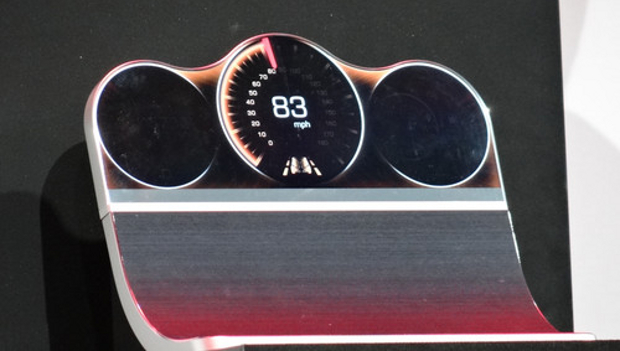 With the International Consumer Electronics Show (CES) in Las Vegas done for another year you can’t but be hit by a sense that while there was plenty to see there was little to pay close attention to. As you can tell from the current TechRadio podcast I wasn’t exactly captivated by much of the blue sky thinking on show that relied on products that were either ‘me too’ or, in the case of wearables, there to be in before Apple releases its Watch and swallows the market. So what did we learn?
With the International Consumer Electronics Show (CES) in Las Vegas done for another year you can’t but be hit by a sense that while there was plenty to see there was little to pay close attention to. As you can tell from the current TechRadio podcast I wasn’t exactly captivated by much of the blue sky thinking on show that relied on products that were either ‘me too’ or, in the case of wearables, there to be in before Apple releases its Watch and swallows the market. So what did we learn?
TV
Last year, the rise of 4K/Ultra High Definition TV television attacked commentators on multiple fronts. There was talk of the resolution (four times that of HD), new content partners, curved screens, wedge-shaped designs and the return of webOS in LG sets. This year, Sony ditched the wedge and went for slim, revealing a set barely 5mm thick.
The push for curved screens continued, but unless you have room for a TV of a minimum 55″ you won’t get the benefit of a superior immersive experience – so the hype goes. Samsung matched Sony for novelty with its bendable 105″ SUHD TV but neither will become household staples any time soon. Sharp is going one generation further with 8K prototypes, showing that some people will do anything for attention.
As for platforms, CES 2015 was marginally more interesting than last year. LG continued its commitment to webOS and Sony said it would be going with Google’s Android TV (Google TV having been quietly retired). Samsung said it would be using its own Tizen software to power its smart TVs, a move in line with its approach to the Galaxy Gear smartwatch. Add in the Roku’s line of set-top boxes and smart televisions and you have a choice of four well-served platforms although the overlap will be enough to stop people spending on more than one.
The last word on 4K from here is Sony’s release of two ultra HD handycam models that at a paltry $1,000 cost less than half the price of last year’s models. I look forward to seeing them in the wild.
The Internet of Things
The contrasting keynote addresses delivered by Samsung and Intel captured the essence of the Internet of Things. Samsung’s presentation was drab, short on detail and kept making references to the importance of partnerships. Intel’s, in contrast, had something special to show off in Curie, a PC the size of a button. Forget partnerships, this is the hardware that will be powering the fridge will that keeps your fridge full, or the facial recognition systems that do away with the need for keys.
Other examples we liked were the Neatotmo Welcome, an app that uses cameras so tell you who is at home via a smartphone app, the Win-Win, an air management system that keeps your house smelling fresh without having to leave windows open, and the VacMop, a cleaning robot that learns when the best time is to clean the house and what the most efficient route to take is and stores the data in the cloud for review.
Wearable tech
There was a total of 569 companies at CES showing off some kind of wearable tech, most of which we’ll never see. One device that won’t be troubling us was Lenovo’s Vibe Band, notable for its $89 price and e-ink display but little else. Blackberry showed up to say it was bringing its Messenger software to Android wearables and Mozilla announced a version of its Firefox OS that will be able to get iOS and Android devices playing together.
This writer’s interest was piqued by the Block, a modular smartwatch allowing for endless customisation, and Garmin’s epix, a ruggedised touch screen smartwatch for extreme sports enthusiasts.
But what about…
There were a couple of notable absentees from CES. Top of my list is Oculus, everyone’s favourite virtual reality developer. I can’t wait to get my hands on the Rift and I’m sure many of the 150,000 CES visitors would be in agreement that VR is finally here.
Also on the naughty step is Microsoft. Windows 10 needs a massive charm offensive that, so far, has failed to appear. In 2009, when Windows 7 was on the way, then-CEO Steve Ballmer was a one-man buzz machine trying to regain consumer confidence after the disaster of Windows Vista. Even if Windows 10 is in a fragile state surely there is an argument for taking any opportunity to show lessons have been learned? Whatever.
And how about those smartglasses? Google Glass hasn’t yet caught on and the focus (pun intended) has moved from the head to the wrist. Nor was it troubling the show floor. Maybe next year. Or the one after that.







Subscribers 0
Fans 0
Followers 0
Followers